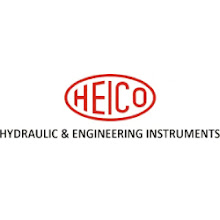In the ongoing financial environment, the discussion concerning top oil (the finish of modest mineral oil) and a worldwide temperature alteration (the death of the planet as far as we might be concerned) has been sidelined somewhat. Be that as it may, these two significant issues have not disappeared. Furthermore, they will in all likelihood impact the source and cost of our energy needs not long from now.
Furthermore, there's no getting away from the way that industry is an immense customer of energy. On the off chance that pinnacle oil and an unnatural weather change are the main problems - and there's a developing collection of proof to recommend they are, then I foresee energy the board will turn into a significant issue for industry throughout the following 10 years and then some. What's more, a huge piece of this weight will fall on hydraulic machine originators.
Productive By Design
Dependable hydraulic machines won't be sufficient. Profoundly effective, dependable machines will be required. This makes one wonder: how effective are the liquid power machines you configure, construct, keep up with or fix? Perhaps this is an issue you don't ponder. Yet, as per a concentrate by the ORNL/NFPA referenced in the January 2014 issue of Hydraulics and Pneumatics, the typical effectiveness of liquid power frameworks is simply 21%!
However, say a stuff-type stream divider was incorporated to accomplish different wheel drives. The hypothetical productivity would now be 0.85 x 0.85 x 0.85 = 0.61. That is 61%, excluding misfortunes through valves and guides. Contrast this and a chain drive looking great, which is 97 to 98 percent effective. This makes sense of why you don't see such a large number of hydraulic bikes around!
Think about Efficiency
In the latest thing of expanding energy costs, which has all the earmarks of being supported by 10,000-foot view issues, for example, top oil and fossil fuel byproduct decrease, there is a developing familiarity with the need to make hydraulic frameworks more effective.
The three clear approaches to doing this are:
1. Use parts with higher local productivity: a cylinder siphon rather than a stuff siphon, for instance.
2. Limit the utilization of energy-misfortune gadgets, for example, stream controls, pressure diminishing valves, and, surprisingly, relative valves.
3. Plan the circuit with the goal that energy isn't consumed when work isn't being finished; emptying the siphon between cycles or utilizing load-detecting control, for instance.
But on the other hand, there's one more method for expanding the general proficiency, and hence the energy cost of working a hydraulic machine: determine a superior oil.
Hydraulic oil is an ointment and a power move gadget. To be most productive in its job as a power move gadget, hydraulic oil needs high mass modulus (high protection from a decrease in volume under tension) and high consistency file (low pace of progress in thickness with temperature).
A comparative circumstance can happen with hydraulic oil. Changes in its mass modulus, as well as thickness, can influence the productivity with which power is moved in the hydraulic machine.
Also Read:- Electric vs Servo Hydraulic Actuators — Which Is the Best?
The ideal hydraulic liquid for transmission of force would be vastly solid (incompressible) and show a steady consistency of around 25 centistokes no matter what its temperature. There is no such thing as such a liquid.
Mass modulus is an intrinsic property of the base oil and can't be improved with added substances. Be that as it may, thickness file (VI) can be improved by utilizing high VI base stocks like fabricated materials as well as by adding polymers called Viscosity Index Improvers to the plan. Ongoing advances in VI improver innovation imply that mineral hydraulic oils with a shear-stable consistency record in the 150 to 200 territory are currently economically accessible.
By keeping up with the oil's consistency in this ideal reach, machine process durations are quicker (efficiency is expanded) and power utilization (diesel or power) is diminished.
So utilizing a higher VI oil implies the hydraulic machine will stay in its power transmission "perfect balance" across a more extensive working temperature range.
You could consider this like introducing a programmed tensioner on the vee belt drive examined before - to keep up with ideal power move conditions.







0 Comments